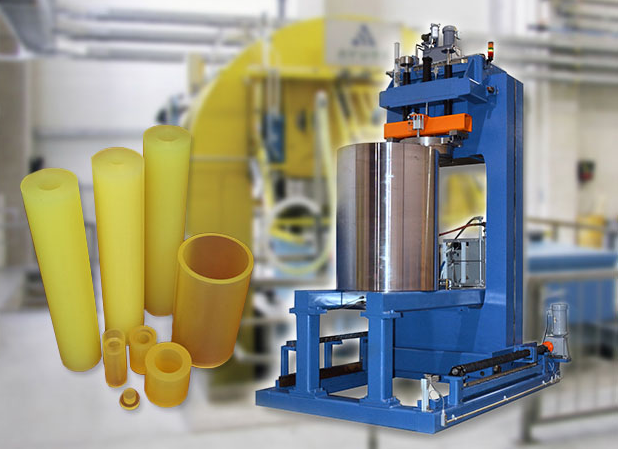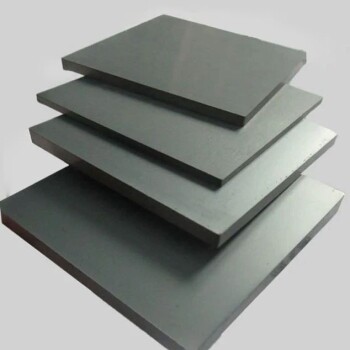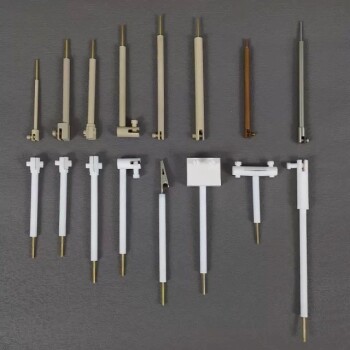Introduction: What are Isostatic Presses?
Isostatic pressing is a manufacturing process that uses high pressure to compact and shape materials. It can be done at room temperature (cold isostatic pressing) or at high temperatures (hot isostatic pressing). Isostatic presses are used in a variety of industries, including aerospace, automotive, and medical. They are capable of producing parts with high density and uniformity, making them ideal for applications that require tight tolerances and consistent performance. Isostatic pressing is a highly efficient and cost-effective way to produce complex shapes and parts with minimal waste.
Table of Contents
Cold Isostatic Pressing and Its Process
One of the most common types of isostatic presses used in material processing is the cold isostatic press (CIP). This press is ideal for materials that are sensitive to temperature changes, such as ceramics and metal powders. The process of CIP involves placing the material to be processed inside a flexible container, which is then submerged in a pressurized fluid. The pressurized fluid applies equal pressure on all sides of the container, which in turn compresses the material inside.
Advantages of Cold Isostatic Pressing
One of the major advantages of cold isostatic pressing is that it ensures that the material is uniformly compressed. This results in a material that has consistent density and strength throughout. Moreover, the CIP process is an environmentally friendly method of material processing since it does not produce any harmful by-products.
Types of Cold Isostatic Pressing
There are two types of cold isostatic pressing recognized all over the world, which are wet bag technology and dry bag technology. Wet bag technology involves filling the mold outside of the pressure vessel with powder, sealing it tightly, and then submerging it in the pressure fluid within the pressure vessel. Then, isostatic pressure is applied to the external surface of the mold, compressing the powder into a solid mass. On the other hand, dry bag technology involves filling the mold with powder while it is still in the pressure vessel. After this, isostatic pressure from the pressure liquid is applied to the external surface of the mold, compressing the powder into a solid mass with a compact microstructure.
Working of Cold Isostatic Pressing
The working principle of CIP is based on Pascal's law, which states that pressure applied in an enclosed fluid is transmitted in all directions throughout the fluid without any change in the magnitude of the pressure. In the case of CIP, the pressure fluid is typically water or oil, and it is pressurized to a range of 200 to 400 MPa. The mold is then filled with the material to be processed, which is typically in powdered form. After the mold is filled, it is sealed and placed in the pressure vessel. The pressure vessel is then pressurized with the fluid, and the material inside the mold is compressed uniformly from all sides.
Advantages of Isostatic Pressing
Isostatic pressing has several advantages over other forms of material processing. Firstly, it ensures that the material is compressed uniformly, resulting in a material that has consistent density and strength throughout. Secondly, it is an environmentally friendly method of material processing since it does not produce any harmful by-products. Thirdly, it can be used for a wide range of materials, including ceramics, metals, composites, plastics, and carbon. Lastly, it can be used to produce parts with complex and intricate shapes, which would be difficult to achieve using other methods.
In conclusion, cold isostatic pressing is a critical process in material processing, and it plays a significant role in improving the efficiency of material processing. The use of CIP in material processing has numerous advantages, including the reduction of material waste, increased production efficiency, and improved quality control. CIP is an ideal choice for materials that are sensitive to temperature changes, and it ensures that the material is uniformly compressed, resulting in a material that has consistent density and strength throughout.
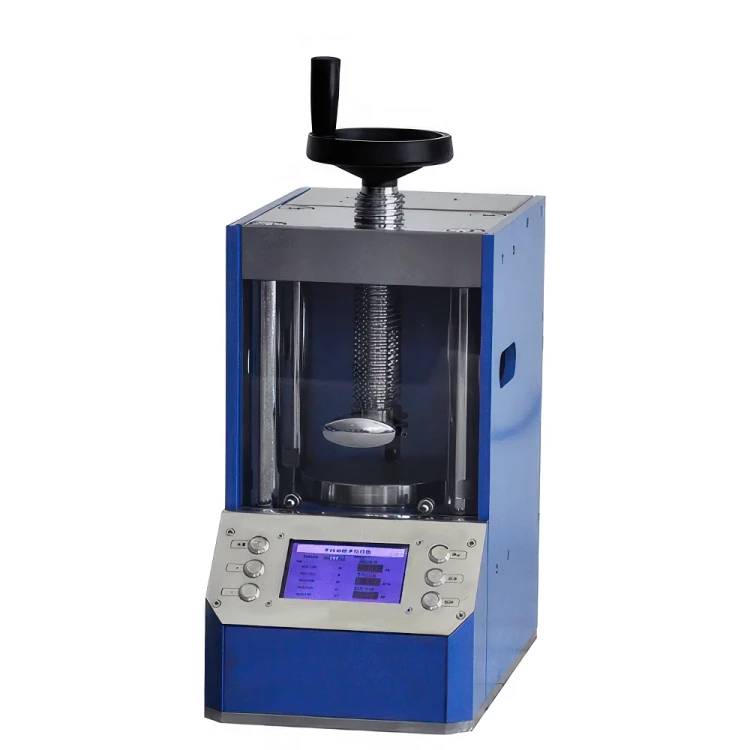
Hot Isostatic Pressing and its Applications
Hot Isostatic Pressing (HIP) is a process that applies high temperature and pressure to materials in a closed chamber to consolidate and densify them. The technology has revolutionized the manufacturing industry by improving the efficiency of material processing.
How does the HIP process work?
In the HIP unit, a high-temperature furnace is enclosed in a pressure vessel. Parts are heated in an inert gas, generally argon, which applies "isostatic" pressure uniformly in all directions. This causes the material to become "plastic" allowing voids to collapse under the differential pressure. The surfaces of the voids diffusion bond together to effectively eliminate the defects, achieving near theoretical density, while improving mechanical properties of the parts such as investment castings.
Applications of Hot Isostatic Pressing
Using HIP technology, manufacturers can produce high-quality components with fewer defects and minimal waste. The process provides a highly controlled environment that minimizes the formation of voids, cracks, and other defects, resulting in improved material properties and better performance.
Aerospace Industry
This technology is especially useful in the aerospace industry where high-performance materials are crucial for safety and reliability. HIP technology enables manufacturers to produce high-strength, lightweight components with tight tolerances and excellent mechanical properties, ensuring better safety, reliability, and fuel efficiency of aerospace components.
Medical Industry
The HIP process can also be applied to the production of medical implants, such as hip and knee replacements. These implants require high precision and must be made from materials that are biocompatible and able to withstand the stresses of daily use. HIP technology enables manufacturers to produce implants with tight tolerances and excellent mechanical properties, ensuring better patient outcomes.

Automotive Industry
The automotive industry has also benefited from the use of HIP technology. It has allowed manufacturers to produce lighter, more fuel-efficient parts with superior mechanical properties, which results in improved performance and safety of the vehicles.
Manufacturing Industry
In the manufacturing industry, HIP technology is used to produce fully dense materials, repair internal microporosity, and bond similar and dissimilar materials together. The technology is used for the consolidation of powders, near-net forming, material bonding, and plasma spraying.
Advantages of Hot Isostatic Pressing
The advantages of hot isostatic pressing technology include increased product density, improved mechanical properties, increased productivity, reduced scrap, and losses. The processed parts exhibit enhanced reliability and extension of service life. The technology allows for smaller, lighter-weight parts with similar or superior performance, and reduces the total production costs of a product.
Conclusion
In summary, Hot Isostatic Pressing has become an essential tool for material processing in a wide range of industries, including aerospace, medical, automotive, and manufacturing. The technology offers numerous benefits such as improved efficiency, better material properties, and reduced wastage. As the demand for high-performance materials continues to grow, the use of HIP technology will continue to expand, providing manufacturers with the means to produce high-quality, reliable, and safe products.
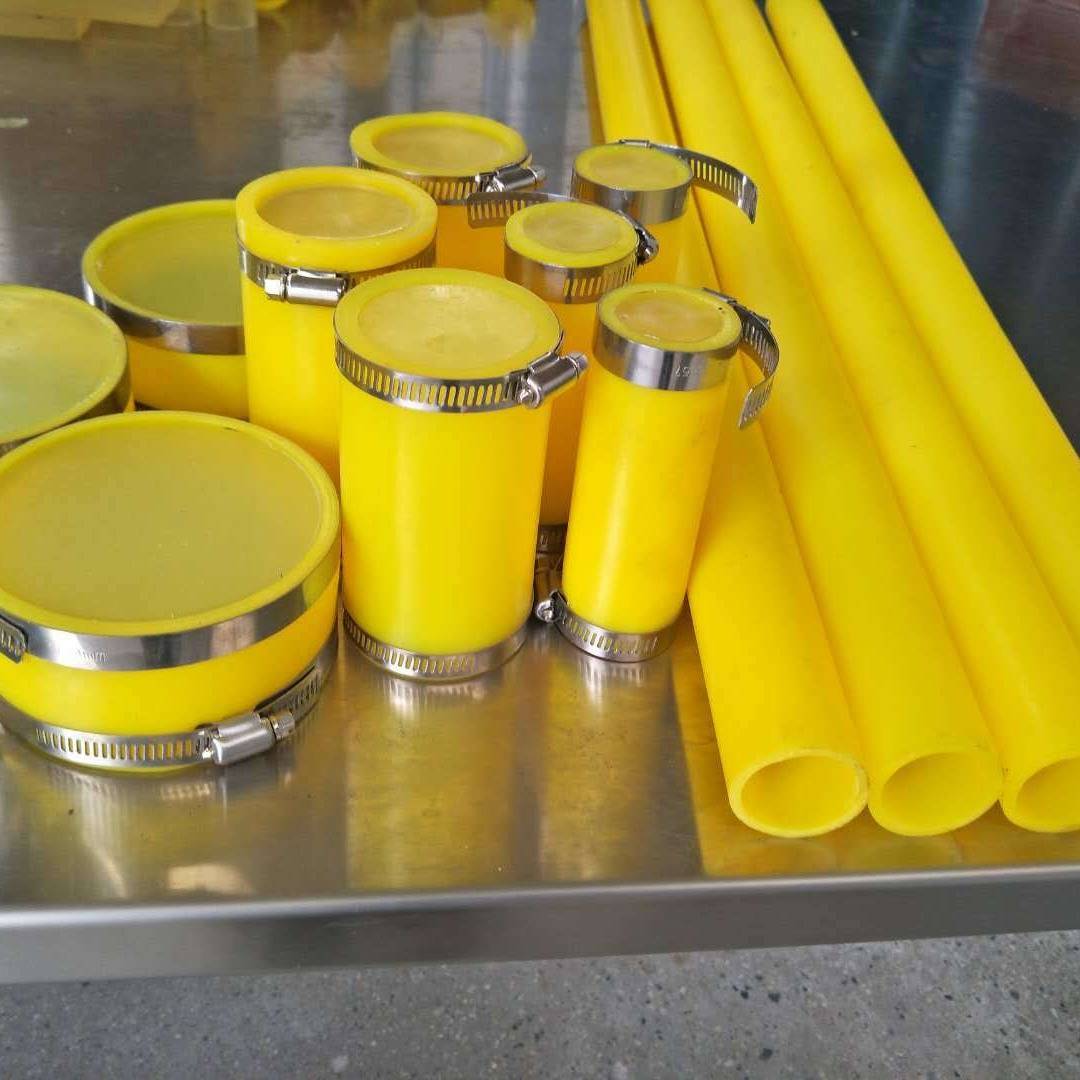
Advantages of Isostatic Pressing
Uniform Density and Improved Strength
Isostatic pressing is a highly efficient process that applies equal pressure on all sides of a material to achieve a uniform density and improved strength. This method can produce complex shapes and parts with high precision and can be used to create materials that are difficult to produce using other methods, such as ceramics and composite materials.
Reduced Waste and Increased Yield
Isostatic pressing helps reduce waste and increase yield in the manufacturing process. It allows for the consolidation of multiple parts into a single, uniform piece, resulting in significant cost savings for manufacturers.
Superior Properties
Isostatic pressing also produces materials with superior properties, such as increased toughness, resistance to wear and corrosion, and improved thermal and electrical conductivity. This makes it a popular choice for manufacturers in a variety of industries, including aerospace, automotive, and medical device manufacturing.
Densification Treatment
Hot isostatic pressing (HIP) is a necessary step for the subsequent processing of castings. The process eliminates internal defects caused by uneven cooling rates during forming, resulting in materials with the highest performance standards.
Powder Metallurgy
Cold isostatic pressing (CIP) is used in powder metallurgy to produce complex shapes and dimensions. It is often used for the compacting step just before sintering.
Refractory Metals
CIP is used to produce refractory metals like tungsten, molybdenum, and tantalum, which have high melting points and are resistant to wear and tear. Tungsten, for example, is used to manufacture wires for filaments in the lamp industry.
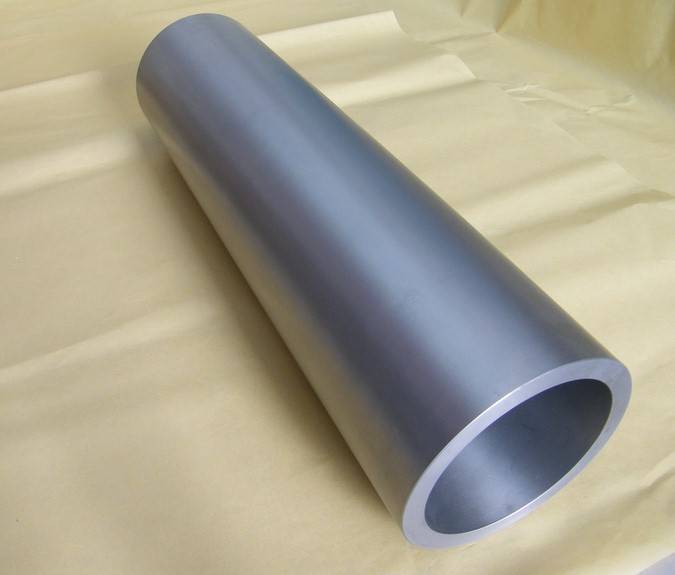
Sputtering Targets
CIP can press indium tin oxide (ITO) powder into large ceramic preforms, which are then sintered under certain conditions to produce ceramic targets with a density of 95%.
Automobiles
CIP is used in manufacturing automobile components, including bearings and oil pump gears.
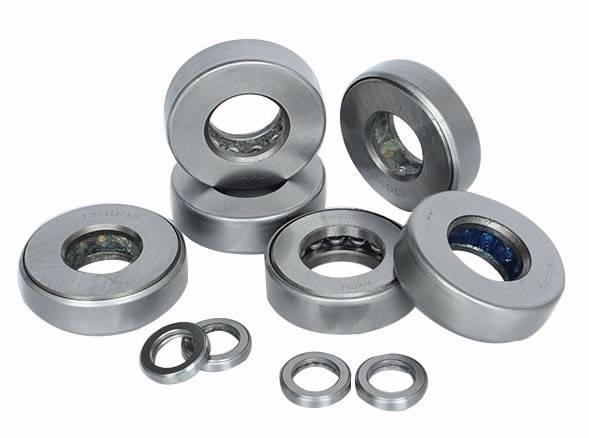
Improved Corrosion Resistance and Mechanical Properties
CIP improves the corrosion resistance and mechanical properties of materials, resulting in longer lifespan and improved ductility and strength.
Isostatic pressing offers several advantages over other material processing methods. It produces materials with uniform density and improved strength, reduces waste and increases yield, and produces materials with superior properties. Both hot and cold isostatic pressing have unique applications in industries such as powder metallurgy, refractory metals, and automobiles, among others.
Working of Isostatic Press
Isostatic presses are designed to improve the efficiency of material processing. They apply uniform pressure to materials in all directions, which is also referred to as cold isostatic pressing (CIP). The process involves placing the material inside a sealed chamber, which is then filled with a fluid, usually water. The chamber is then pressurized, causing the fluid to transmit the pressure equally to all surfaces of the material.
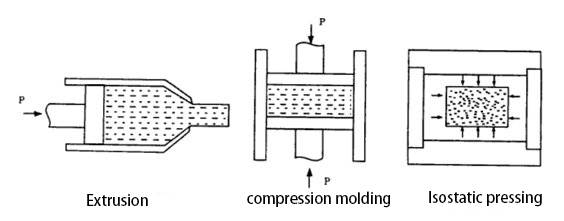
Step 1: Placing the Material to be Processed Inside a Sealed Chamber
The first step in the working of an isostatic press involves placing the material to be processed inside a sealed chamber. The material can be ceramics, metals, or any other material that requires uniform compaction. The chamber is then sealed to prevent the fluid from leaking out during the pressurization process.
Step 2: Filling the Chamber with a Fluid
Once the material to be processed is inside the sealed chamber, the next step is to fill the chamber with a fluid. Water is the most commonly used fluid, but other fluids can also be used depending on the material being processed.
Step 3: Pressurizing the Chamber
After the chamber is filled with fluid, the next step is to pressurize the chamber. The pressure is applied uniformly from all directions to the material. This uniform pressure helps to compact the material, making it denser and stronger. The high-pressure environment of the isostatic press also helps to eliminate voids and defects in the material, resulting in a more uniform and reliable end product.
Step 4: Customizing the Process to Suit the Specific Material
Isostatic presses can be operated using a range of different fluids, allowing for customization of the process to suit the specific material being processed. This customization ensures that the material is processed in the most efficient way possible, resulting in a high-quality end product.
In conclusion, the working of an isostatic press involves placing the material to be processed inside a sealed chamber, filling the chamber with a fluid, pressurizing the chamber, and customizing the process to suit the specific material being processed. The uniform pressure applied from all directions helps to produce stronger and more reliable end products, making isostatic presses highly effective machines for improving the efficiency of material processing.
Conclusion: The Future of Isostatic Pressing
Isostatic pressing is a highly effective technique for improving the efficiency of material processing. The future of isostatic pressing is bright, with many exciting advancements on the horizon. One such advancement is the development of more efficient and cost-effective isostatic presses, which will enable more companies to take advantage of this technology. Another area of focus is the application of isostatic pressing in new industries, such as aerospace and defense. With its ability to produce high-quality components with excellent mechanical properties, isostatic pressing is sure to play a significant role in the future of material processing.
Related Products
- Warm Isostatic Press WIP Workstation 300Mpa for High Pressure Applications
- Warm Isostatic Press for Solid State Battery Research
- Isostatic Molding Pressing Molds for Lab
- Cold Isostatic Pressing Machine CIP for Small Workpiece Production 400Mpa
- Electric Lab Cold Isostatic Press CIP Machine for Cold Isostatic Pressing
